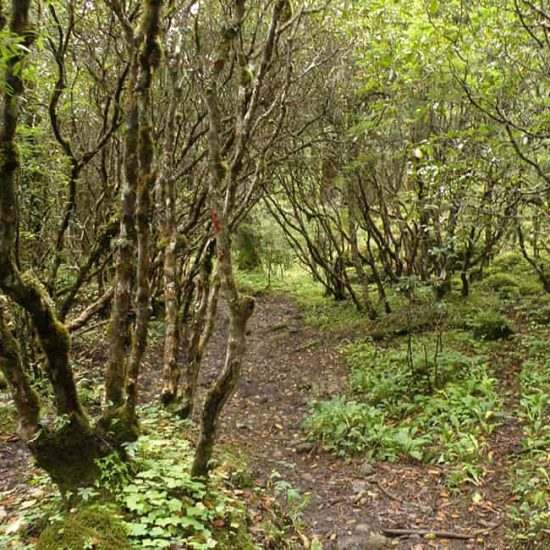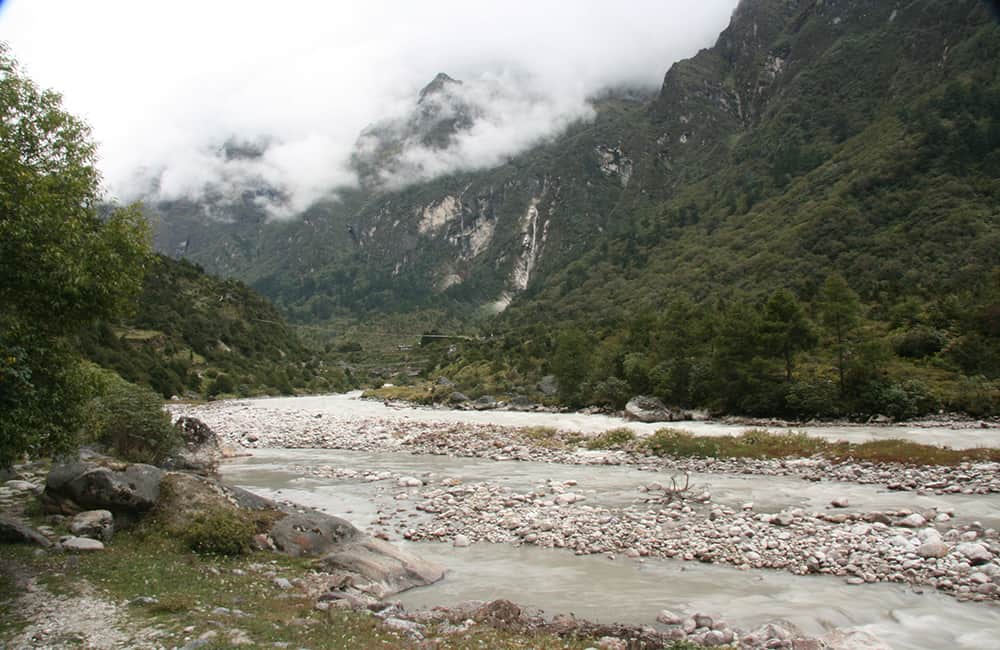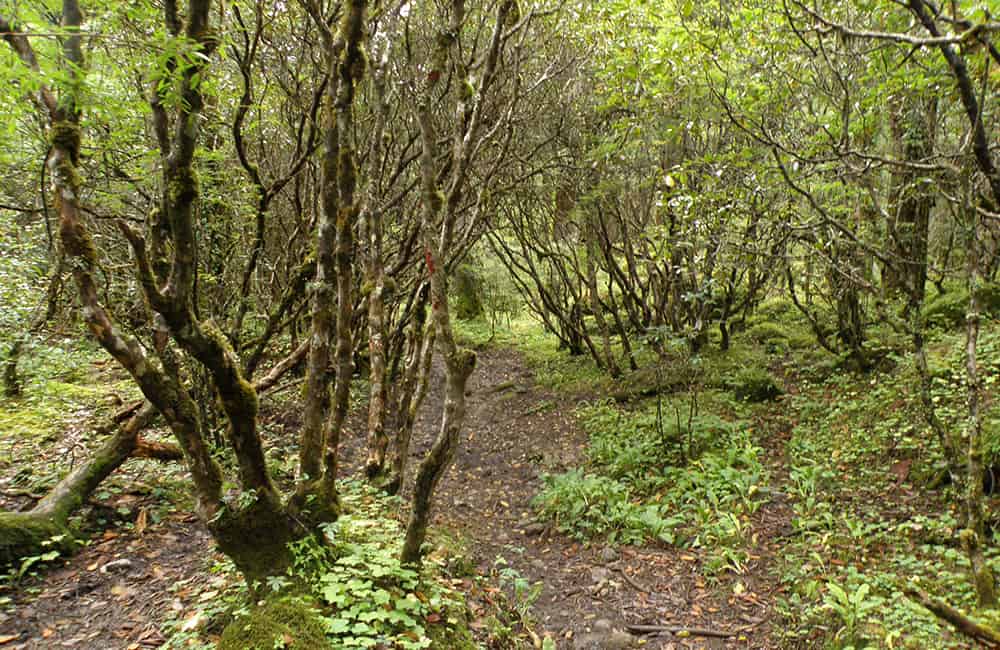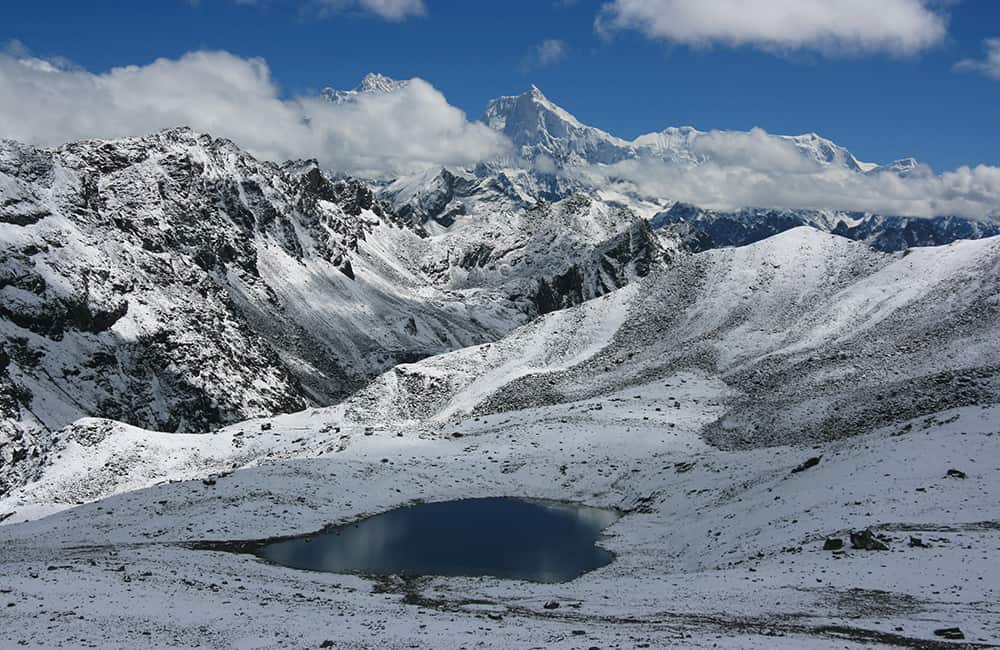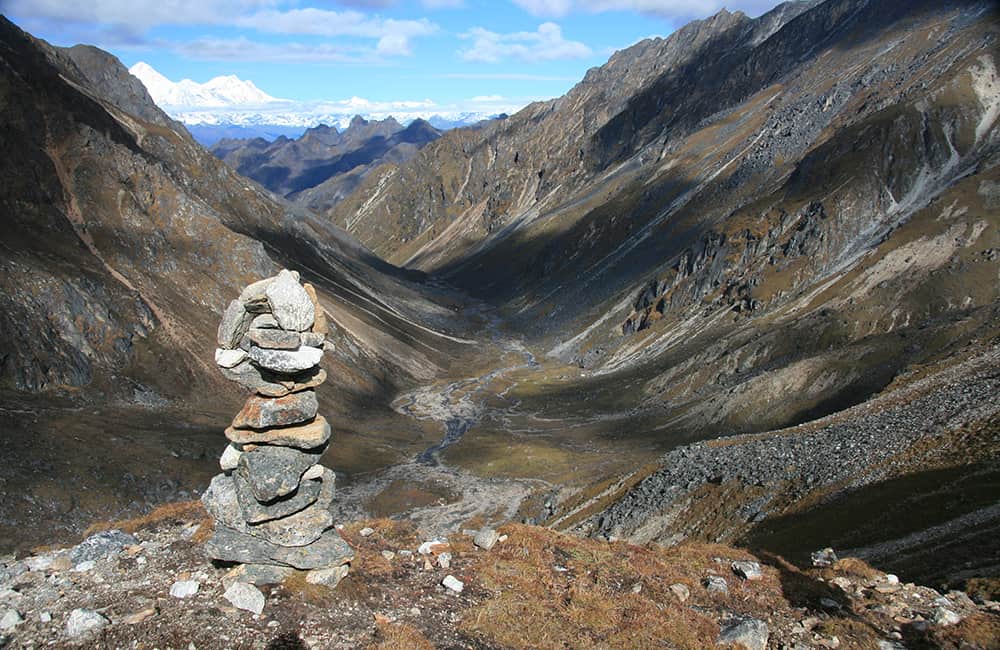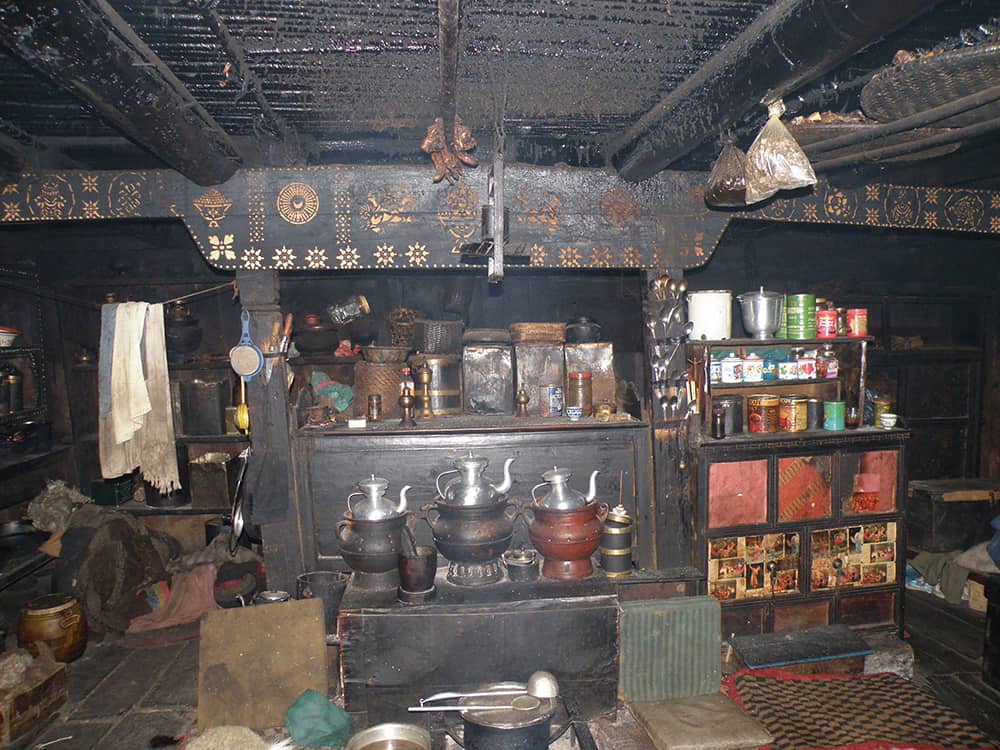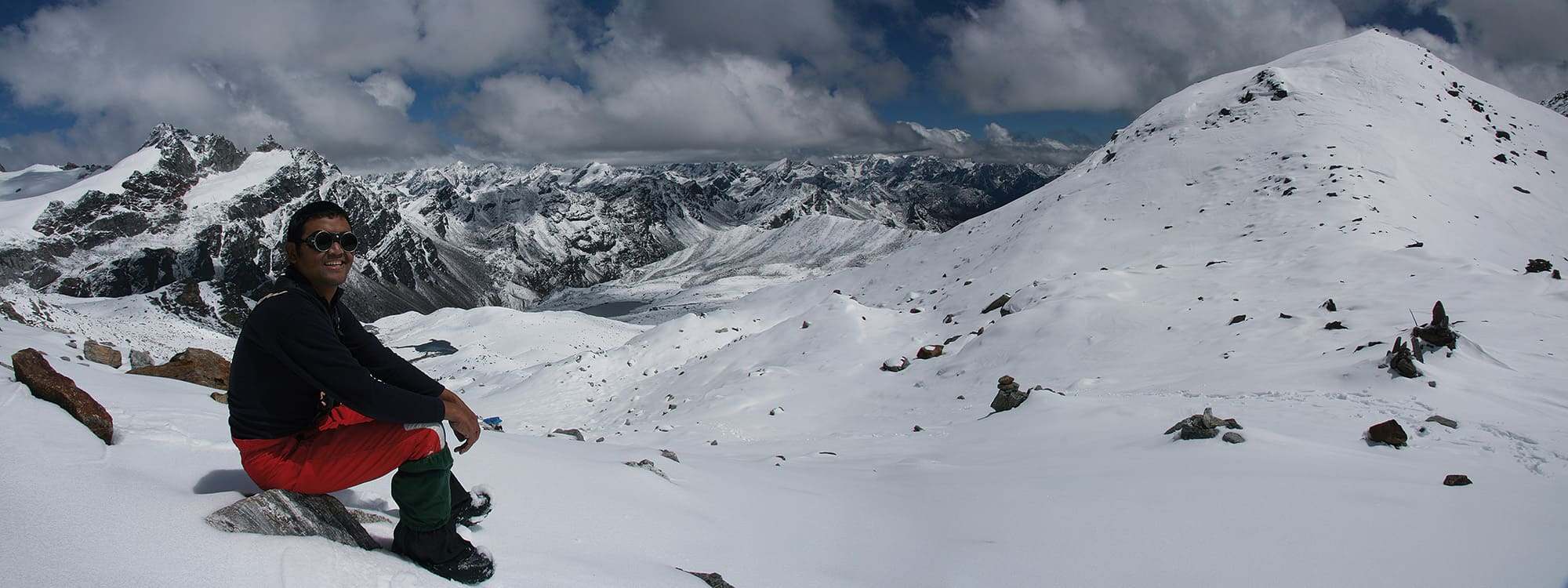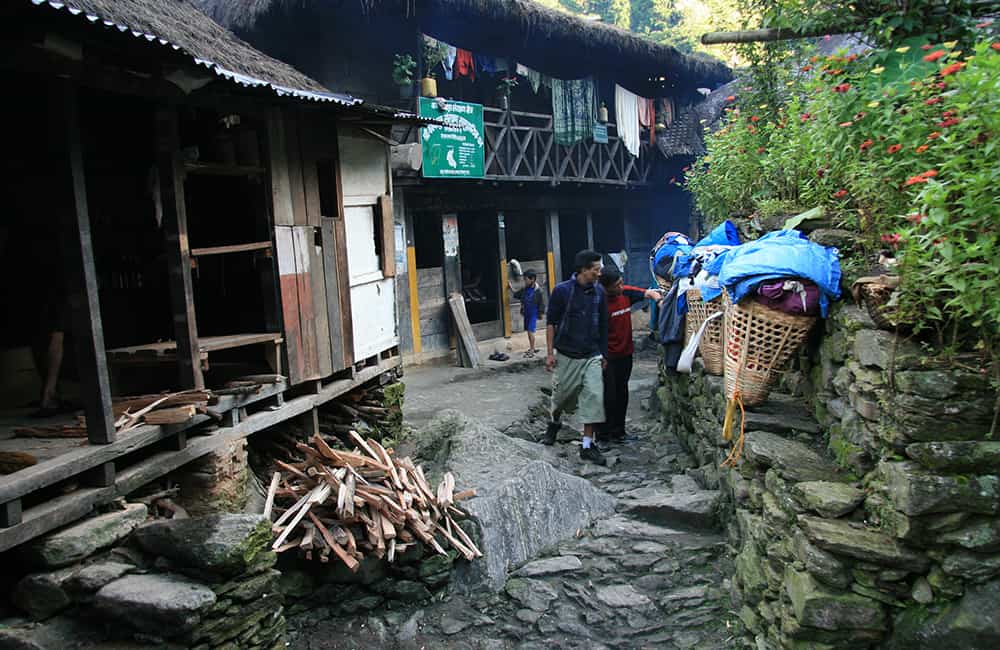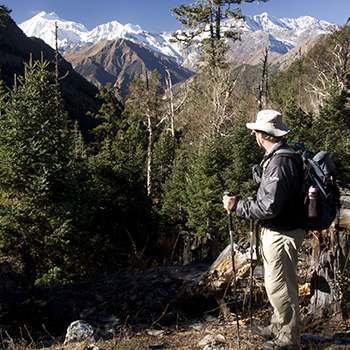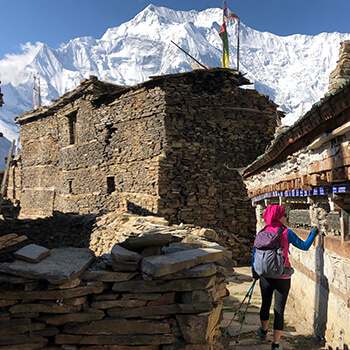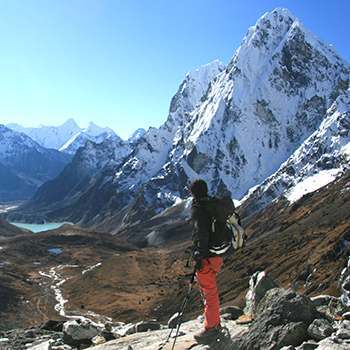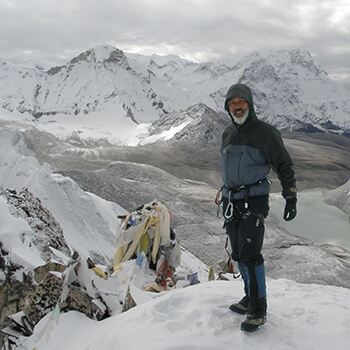Kanchenjunga Base Camp
Kanchenjunga Base Camp Trek
The Kanchenjunga Base Camp Trek is a journey of discovery to the 3rd highest mountain in the world.
Follow trails to the remote northern base camp through stunning valleys, across glaciers and over high mountain passes. Plus there’s spectacular forests of rhododendron to explore. It’s all combined with the openhearted hospitality of the Sherpa, Limbu, Rai and Lhomi communities you can get to know along the way!
Key Points:
- Trekking Grade: Grade 4 Energetic
- Duration & distance: About 20 days total
- Gradient: Some steep and arduous sections
- Quality of path: Formed & rough tracks, some obstacles
- Quality of markings: Limited signage
- Experience required: Some walking experience required
- Walking times: Less than 6½ hours per day
- Steps: Many Steps
- Highest point: 5143m
- Best season: Apr-May or Oct-Nov
- Accommodation: Camping or basic teahouses
- Recommended map: NP101 GHT Kanchenjunga Region, Himalayan Map House, 2017
- Recommended Guide Book: Nepal Trekking and the Great Himalaya Trail, Trailblazer, 2020.

GRADE 4
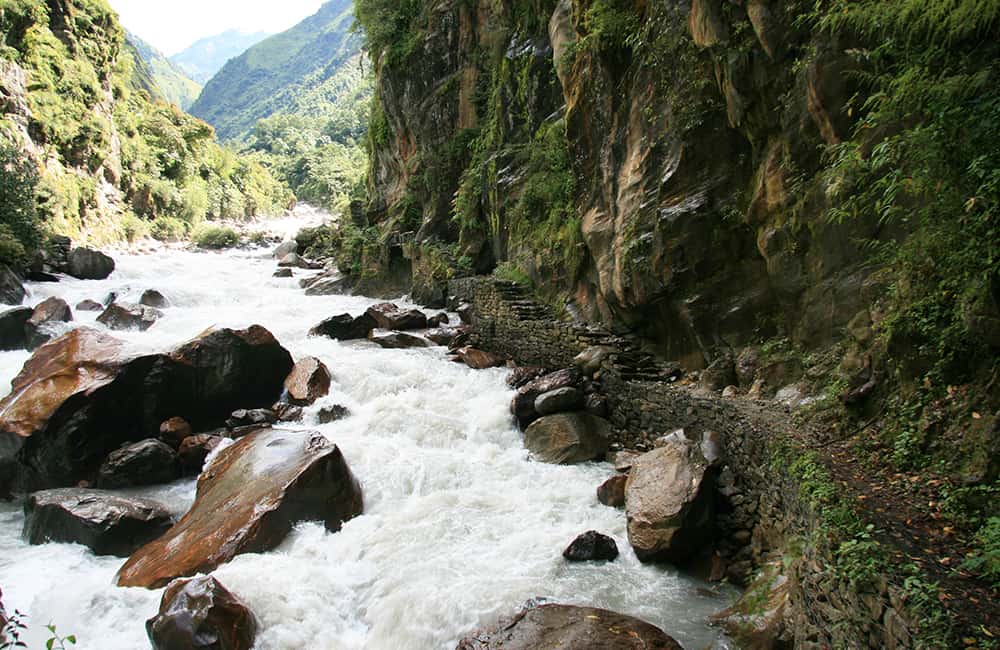
The trail and communities to Kanchenjunga Base Camp are Himalayan magic!
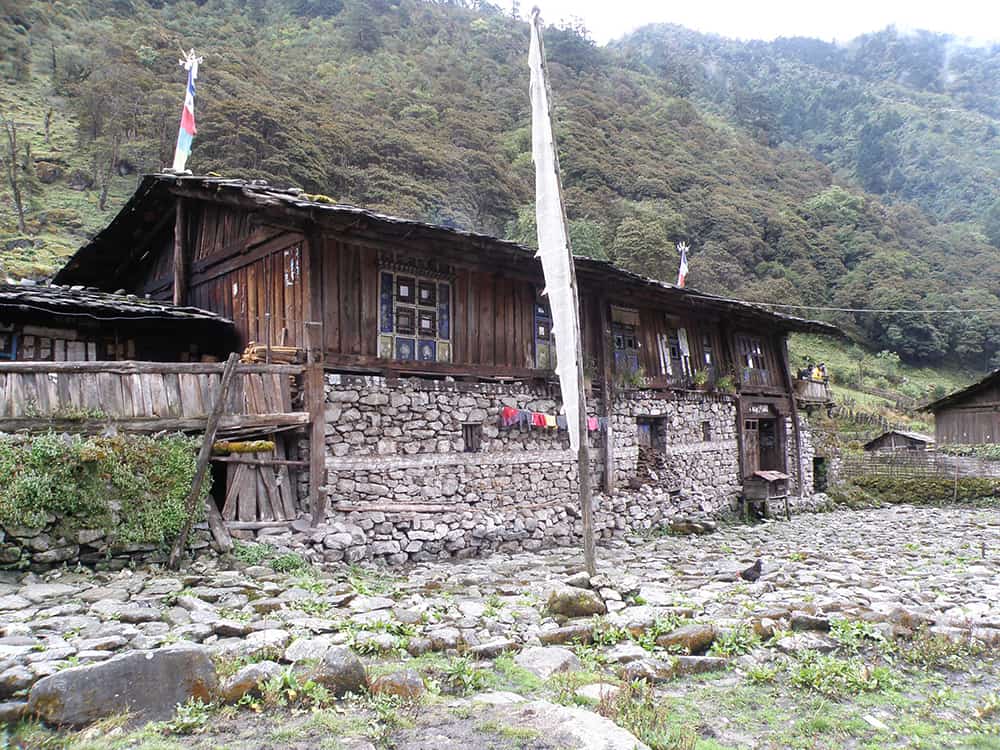
When to visit Kanchenjunga Base Camp?
There are two main seasons (April-May and October-November) for visiting Kanchenjunga Base Camp and both offer very different trekking experiences.
Being isolated from the other main ranges in Far East Nepal, Kanchenjunga is renowned for making its own weather and suffering from heavy monsoonal rains. After the monsoon has finished the mountains are free of lingering cloud and the views in late October and November are probably at their best. By mid-December snow closes the higher trails, which will not open again until mid to late March at the earliest. The pre-monsoon period is famous for the stunning forests of rhododendron that begin at Suketar and continue throughout the trek. These rhododendron forests are perhaps the most extensive throughout the Nepal Himalaya.
Getting to and from the Kanchenjunga region can be time consuming. In the main trekking seasons a scheduled flight operates between Biratnagar and Suketar a few times a week. For the remainder of the year, you either have to drive to Taplejung or Phidim, or charter a helicopter to Suketar.
Kanchenjunga Base Camp: Route Options
The trek to Kanchenjunga Base Camp takes about 20 days. The main trail can be combined with a number of routes to explore some magnificent wilderness areas. If you want to visit the southern Kanchenjunga Base Camp (yes there are two base camps), combine trails to Yalung via Ghunsa and Yamphudin. Another great option is over Nango La from Ghunsa to the intriguing communities of Olangchun Gola and the very remote community at Yangma. From Yangma you can explore one of the wildest hidden corners of the Himalaya!
From Ghunsa, there is a trail to Olangchun Gola (Walangchung Gola) via Nango La, which takes a total of three days to complete. The trail from Olangchun Gola back to Lelep/Sekatum takes two days. There is a convenient riverside camp at Magawa, after 3½ hours of walking on the first day.
Explore Yangma
It is possible to trek to a remote 5700m Tibetan border pass via Yangma without any additional permits. Camping is the only option, but if you have the time this is one of the most remote corners of the entire Himalaya. Allow three to four days from Ghunsa to Yangma, then four days minimum (without an acclimatisation stop) to reach the border and return to Yangma. Then it’s a further two tough days to Olangchun Gola, where it would be wise to rest for a day or two.
Visit Kanchenjunga South Base Camp
An alternative route from Suketar to Ghunsa goes via Yamphudin, Cheram (Tseram) and Yalung Base Camp (South Kanchenjunga Base Camp) to create a circular trek. It requires camping gear and takes 10-14 days depending on your route and time spent at Yalung. Note that a major landslide has made access to Yalung dangerous and it is not advisable to take laden porters.
The Border with India on Singalilla Ridge
The border with India and the spectacular Singalilla National Park are restricted areas that require a special permit issued from the police station in Chyangthapu (Phunlading) or, a valid Indian tourist visa. From Phalut, trails head almost due west to Taplejung in about six days via Sablakhu and Kande Bhanjyang. En route you pass near to Pathibhara Temple, a very popular pilgrimage site and a worthy side trip to any itinerary. Trails further westwards to the Makalu region from Taplejung either head through Dobhan or Topkegola.
Visiting the India Border Near Kanchenjunga Base Camp (north)
If you have experienced crew, or can employ a local guide, it is worth the effort to continue along a small, dangerous trail that climbs around the massive curve in the glacier to the north. This route is very rarely trekked and after three hours will require you to traverse and then walk across a glacier. Beyond here you will need ropes and associated climbing equipment. After two days you reach Jhinsang La and the border with Sikkim and Tibet. Expect to take another two days to return. Be paranoid about the weather, this is not a place to get caught out.
The small river that creates the landslide and loose rock about an hour below Kanchenjunga Base Camp flows from a glacier complex on Mera Peak. On either side of the river are two minor rocky summits of close to 6000m, which do not require permits to climb and are fantastic viewpoints.
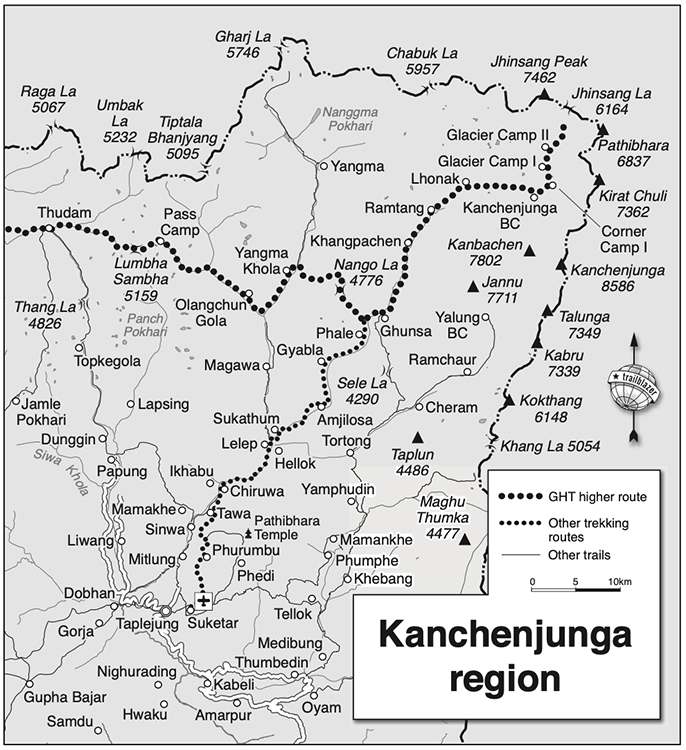
How Much does the Kanchenjunga Base Camp Trek Cost?
To help you budget and plan, we’ve made a comprehensive costing explanation on How Much Does the GHT Cost? But here’s a simplified breakdown.
GHT Kanchenjunga base Camp Trek for 23-days estimated costs:
- Solo as much as possible US$3,500.
- Twin-share with minimum guiding US$2,650 per person.
- Twin-share fully supported US$5,100 per person.
Do you have any questions about costs? Please Get in Touch for more details.
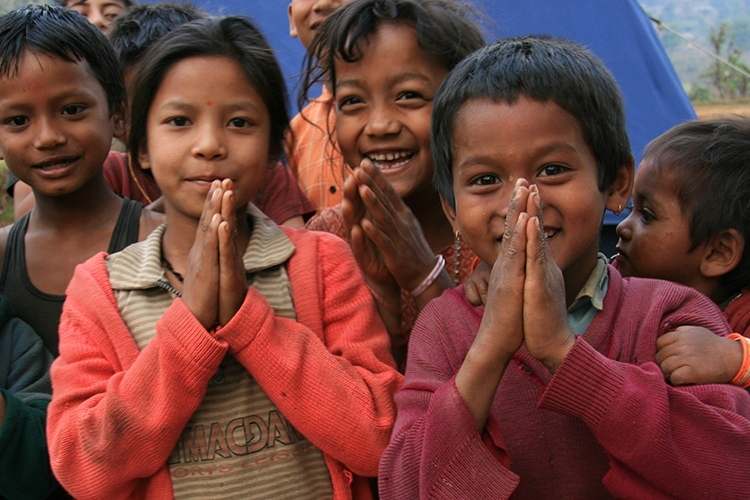
Customisation is Normal
Want to do things a little differently? Maybe take some extra time, or go a bit faster? Or avoid technical sections or combine with other trails? Every GHT trek is different and that changes the price, but please feel free to Get in Touch to ask questions and how to customise your own trek.
Bookings
Please note that www.greathimalayatrail.com does not handle bookings for treks. We are here to inform you about the trails and logistics, but you will need to book through a registered trekking operator in Nepal. If you would like an operator recommendation or feedback on a company you are already talking to, then please Get in Touch.
Your Impacts on the Kanchenjunga Base Camp Trek

Solo (Independent)
The Kanchenjunga Base Camp is quite self-sufficient so you can easily create positive social impacts. But it is remote, so transport adds to your footprint.
If you can add some extra time to do the side trips, you’ll be making a bigger positive difference to local villages.


Twin Share (Independent)
The Kanchenjunga Base Camp is quite self-sufficient so you can easily create positive social impacts. But it is remote, so transport adds to your footprint.
If you can add some extra time to do the side trips, you’ll be making a bigger positive difference to local villages.


Camping (supported)
The remoteness of Kanchenjunga Base Camp increases GHG and waste impacts.
So only consider going with a camping crew if you are going to explore the remoter areas and stay an extra week or more.

For more information about social, Green House Gas and waste impacts of treks, see The Impact of your Trek.
-
Destination
-
DepartureKathmandu
-
Dress CodeMid-altitude alpine clothing and camping equipment required
-
IncludedKanchenjunga Base Camp
-
GradeGrade 4
-
Idea Date Range15/10/2021
-
Style of TrekTeahouse or camping





